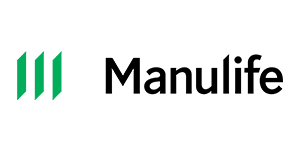In today’s competitive business landscape, organizations recognize the importance of employee engagement as a driver of productivity, job satisfaction, and overall organizational success. An engaged workforce is more motivated, loyal, and productive. In this article, we explore the significant role that employee benefits play in fostering employee engagement and discuss strategies to improve engagement through well-designed benefits programs.
Table of Contents
How Employee Engagement is Defined
Employee engagement is the emotional commitment and dedication employees have toward their work and the organization. It is the level of enthusiasm shown towards their tasks, their co-workers, company events and activities. Engaged employees are more likely to go the extra mile, contribute innovative ideas, and stay loyal to their employers.
Invested in Group Benefits For Your Employees Yet?
We can help.
Understanding Employee Engagement
Employee engagement is a critical factor that directly impacts an organization’s performance. It encompasses several aspects, including job satisfaction, commitment, motivation, and a sense of purpose. Engaged employees are passionate about their work, aligned with the organization’s goals, and willing to invest their time and effort to contribute to its success. In a recent study completed by Gallup.com, an engaged workforce resulted in 81% lower absenteeism. That’s a big number, and worth every effort to keep your staff content.
Furthermore, research has shown that engaged employees are more likely to go above and beyond their job responsibilities, leading to increased productivity and innovation. They also tend to have higher levels of customer satisfaction, contributing to improved business outcomes.
To foster employee engagement, organizations can focus on factors such as providing meaningful work, offering opportunities for growth and development, promoting a positive work environment, and recognizing and rewarding employees’ contributions. By prioritizing employee engagement, organizations can create a thriving workplace culture that drives success and retention.
Improving Employee Engagement with Benefits
Employee benefits play a pivotal role in fostering employee engagement. Unfortunately, many Canadian employers neglect this crucial component of their offerings. A comprehensive benefits package that addresses employees’ needs and aligns with their values can significantly contribute to job satisfaction and overall engagement.
Benefits such as health insurance, retirement plans, work-life balance programs, and professional development opportunities demonstrate the organization’s commitment to employee well-being, growth and safety. Let’s take a closer look at how each type of benefit can directly impact employee engagement:
How Employee Engagement is Improved with Health Insurance
There are a number of ways that offering group benefits can improve the engagement levels of an organization, from increased sense of belonging and loyalty to enhanced job satisfaction.
Enhanced Job Satisfaction
Offering a group health plan demonstrates that the employer values and cares about the well-being of their employees. This recognition fosters a sense of appreciation, leading to higher job satisfaction and increased engagement.
Financial Security
Although Canada provides basic healthcare, group health plans help employees manage additional healthcare expenses by providing financial protection against medical costs outside of what is normally covered by provincial plans. With coverage for dental and vision, prescription medications, and preventive care, employees feel more secure and less burdened by healthcare-related financial concerns. This financial security contributes to their peace of mind and overall engagement.
Wellness and Preventive Care
Group health plans often offer wellness programs and preventive care benefits. These initiatives promote a culture of wellness, encouraging employees to adopt healthy lifestyles and prioritize preventive healthcare measures. When employees feel supported in their well-being, they are more likely to be engaged, energetic, and productive at work.
Sense of Belonging and Loyalty
By providing a group health plan, employers demonstrate their commitment to the health and welfare of their employees. This fosters a sense of belonging and loyalty among the workforce, as employees feel valued and cared for. A strong sense of belonging directly contributes to higher employee engagement, as individuals are more likely to invest themselves in an organization that prioritizes their well-being.
How Employee Engagement is Improved with Retirement Plans
Another important element of a group benefits plan are the retirement benefits that may come with it. While not all group plans will include retirement benefits, the ones that do can positively impact employee engagement in the following ways:
Future Financial Security
Offering retirement benefits in a group plan demonstrates a commitment to employees’ long-term financial well-being. This sense of security fosters higher engagement, as employees can focus on their work without undue stress about their retirement.
Enhanced Loyalty and Retention
Retirement benefits create a sense of loyalty and attachment to the organization, as employees recognize the value placed on their future. This increases engagement and reduces turnover, as employees are more likely to stay with a company that invests in their retirement.
Motivation and Long-Term Planning
Retirement benefits serve as a motivator for employees to work towards long-term goals. While the Canada Pension Plan is offered to those who have paid into the system, those benefits were not designed to provide full financial security in retirement. Offering the additional backing of a clear retirement plan encourages employees to stay engaged, work towards advancement, look forward to their retirement, and contribute to the company’s success with a future-oriented mindset.
Peace of Mind
Knowing that retirement benefits are provided through a group plan alleviates concerns about financial stability during retirement. This peace of mind allows employees to focus on their current roles and responsibilities, leading to increased engagement and productivity in the present.
Designing Employee Benefits for Engagement
To improve employee engagement, organizations must design benefits packages that are appealing and relevant to employees’ needs. Conducting surveys or feedback sessions can provide valuable insights into employees’ preferences and help tailor benefits offerings accordingly. Flexible work arrangements, wellness programs, and opportunities for skill development and career advancement are examples of benefits that can enhance engagement.
Communication and Education
Effective communication and education about employee benefits are crucial for enhancing engagement. Organizations should ensure employees are aware of the full range of benefits available to them and understand how to access and utilize them. Regular communication through various channels, such as email, intranet portals, and employee meetings, helps reinforce the value of benefits and their impact on employees’ overall well-being and engagement.
Motivational Impact of Benefits
Employee benefits can serve as powerful motivators. Performance-based incentives, recognition programs tied to benefits, and opportunities for advancement contribute to employee motivation and engagement. When employees see a direct connection between their performance and the rewards they receive through benefits, they become more motivated to excel in their roles.
Creating a Culture of Recognition and Appreciation
Employee benefits can be integrated into a culture of recognition and appreciation. By acknowledging and rewarding employees’ contributions through benefits, organizations demonstrate that they value their employees. Recognizing employees’ efforts and achievements fosters a positive work environment, enhances engagement, and encourages a sense of loyalty and commitment.
Understanding Regulatory Compliance for Group Benefits in Canada
In the next article in this series, read about Regulatory Compliance.
The Takeaway
In conclusion, employee engagement is crucial for organizational success, and employee benefits play a significant role in fostering engagement. Well-designed benefits packages that align with employees’ needs, effective communication, and integration of benefits into a culture of recognition are key strategies to enhance employee engagement.
In this pursuit of creating engaging workplaces, Group Enroll offers a valuable advantage. With their expertise in benefits administration, Group Enroll helps organizations design and implement benefits packages that align with their employees’ needs, enhancing engagement and overall job satisfaction. Partnering with Group Enroll allows organizations to maximize the value of their benefits offerings and foster a positive work environment that promotes employee engagement.








